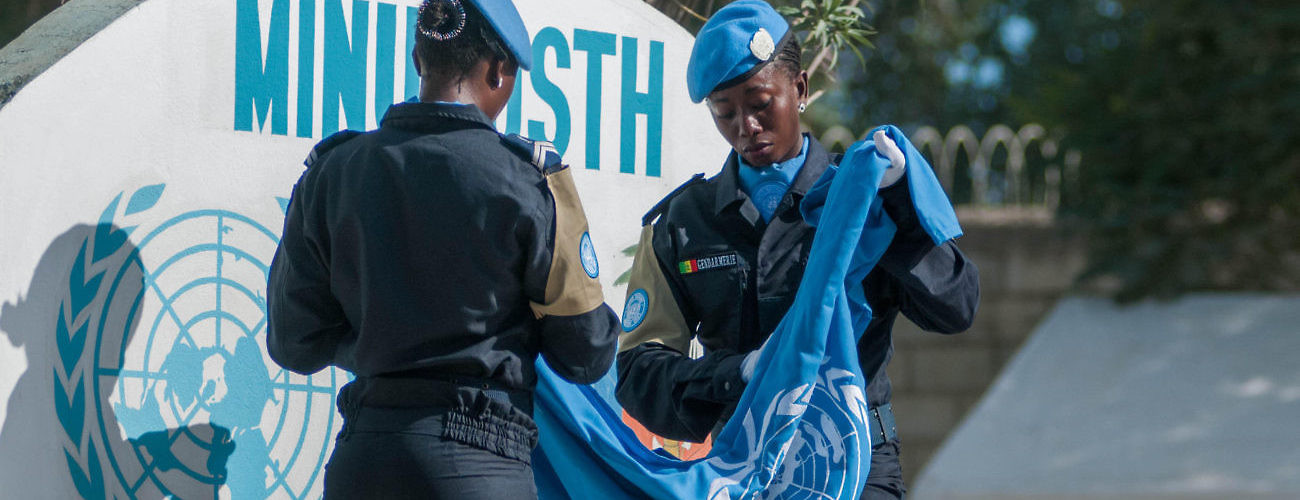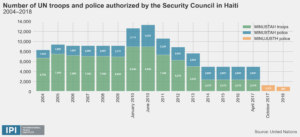Members of the Mission to Support Justice in Haiti (MINUJUSTH) participate in a ceremony in Puerto Principe, marking the UN’s transition in Haiti from the large-scale UN Stabilization Mission in Haiti (MINUSTAH) to the leaner, smaller peacekeeping mission MINUJUSTH. October 16, 2016. EFE News Agency/Alamy Live News.
The process of reconfiguring, closing, and handing over responsibilities to a UN country team or host-state institutions is a crucial—and challenging—part of the life cycle of a UN peacekeeping mission. Transitions have been a central feature of UN peacekeeping in Haiti, in particular, which has gone through numerous transitions since the 1990s. This paper focuses on the two most recent peacekeeping transitions in Haiti: one from the UN Stabilization Mission in Haiti (MINUSTAH) to the UN Mission for Justice Support in Haiti (MINUJUSTH), or from a multidimensional peacekeeping operation involving a substantial military component to a small peace operation focused on police and rule of law; and the ongoing transition toward the closure of MINUJUSTH and preparations for the eventual handover to other actors.
For both missions, the paper focuses on three issues: (1) transition planning, including the political dynamics that influenced decision making, gaps between plans and the reality on the ground, and the limited role of the host state, UN country team, civil society, and donors; (2) management, logistical, and administrative challenges; and (3) issues related to business continuity and changes in substantive areas of work. It concludes by offering lessons learned from the past and current transitions that can inform the next drawdown and exit of peacekeepers from Haiti.
Related:
![]() Interview with former President of Haiti Gérard Latortue (in French)
Interview with former President of Haiti Gérard Latortue (in French)









